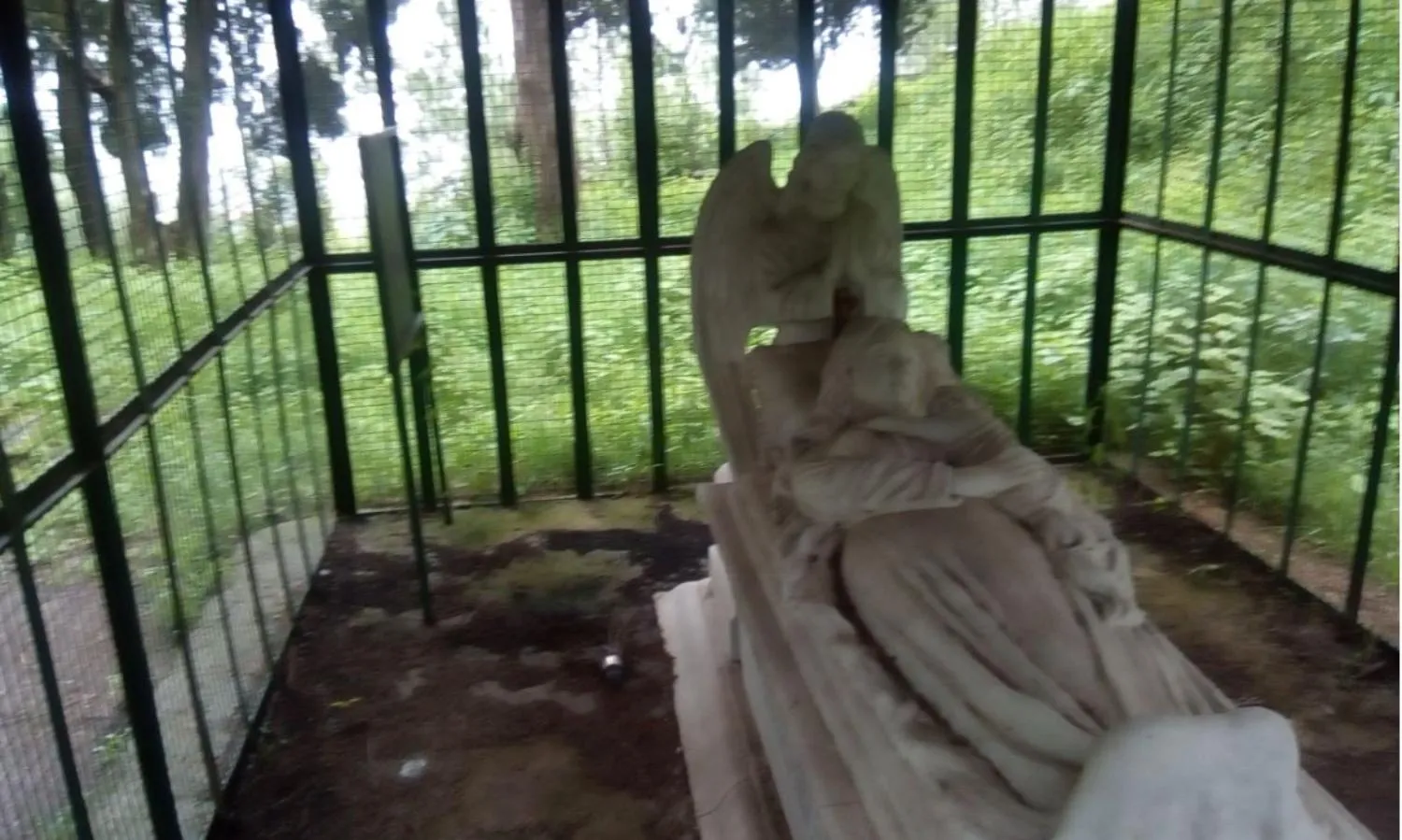A Fabled Grave in a Hill Town Cemetery
‘Because I could not stop for Death, He kindly stopped for me;’

DAGSHAI: Can death itself become immortal? Can it be romanced for eternity, with a bearing on the generations to come, if myths and beliefs find their way towards it? These are some of the questions that hit a rational mind on a visit to the Anglican cemetery in the quaint cantonment of Dagshai or Daagh-e Shahi in Himachal Pradesh.
The cemetery has become a kind of ‘must visit’ indicator for the few tourists that visit the place, and have no inhibitions on walking among the dead.
The centre of interest in this cemetery that continues to draw visitors is the grave of a British lady, Mary Rebecca Weston. To tell her tale straight in sparse words, it is a very small one. Weston passed away during childbirth on December 10, 1909. Her doting husband George O’Weston buried her here in one of the most beautiful graves, in memory of his departed wife and child.
On the grave a statue of a woman with a baby in her lap, as an angel showers petals on both.
But Weston’s death was not to be forgotten as the routine demise of a woman in labour. The legend now goes that this sad, childless lady had come across a holy man or mystic at the town’s Charing Crossing. Looking at her anxious face, the mystic gave her an amulet promising her she would definitely conceive. And conceive she did, only to lose her own life along with her baby’s.
Those months during which she carried the baby must have been the most joyful of her life.
After her death, the belief grew that her grave had magical powers, and those unable to conceive thronged it to take with them pieces of the grave and the soil around, back home with them in the hope of begetting a child.
An addition was made, that those who came here to pay obeisance to the dead soul and returned with a relic, would give birth to a male child. In a patriarchal society the marble grave fell prey to superstition, and stood desecrated by people wanting a baby or a boy.
It was only a few years ago that the temporal authorities finally put an end to this practice by covering the grave with an iron mesh. The graveyard now stands locked under the vision of closed circuit cameras.
They say another reason for locking up the place is to check the activities of certain anti-social elements, in a place considered pious.
But if the authorities thought they could make people desist they were wrong, and many pilgrims, mainly childless couples, continue to visit the place. Now they come for darshan (witnessing) and to seek blessings from Mary’s soul.
On a recent visit I came across a childless couple hailing from Darjeeling.
The husband said, “We have been married more than ten years and do not have a child. I agree that one must visit a medical expert for the remedy, but what is wrong in seeking blessings at this place if it brings some solace to my wife?”
His wife expressed contentment at having made the pilgrimage to Mary’s grave.
This in 2019, over a hundred years after Mary Rebecca Weston died.
There was nothing left to argue with the friendly couple besieged by social pressures.
The grave in local parlance is Mem ki Qabr or the Englishwoman’s Grave. And there is no doubt it is a beautiful piece of art that stands out as yet another British legacy.
It is said that Indians were not allowed inside the graveyard during British rule.
George O’Weston made another contribution to the town. He had an Italian marble altar erected inside the St Patrick’s Roman Catholic Church in this cantonment. The church too is a beautiful monument known for its wooden ceiling and red stone floor. It also has a baptismal pond made of redstone.
One is reminded of a bygone era when one visits this place. The pews for keeping guns are another fine feature of the church.
While the Anglican cemetery stands on a remote outskirt of town, there is another famous Roman Catholic cemetery located in close proximity. Both find mention in the list of places of interest for visitors on a board put up by Himachal Tourism and local cantonment board at Charing Crossing.
Another interesting grave is that Charles Wilson of 39th Royal Engineers Company, whose epitaph reads, “Was accidentally killed by falling on this road from the road above 24 May, 1875”.
Be it Mary Rebecca Weston or Charles Wilson who have become immortal in the minds of those visiting their graves, one is reminded of the opening lines of ‘The Chariot’ from Emily Dickinson—
Because I could not stop for Death,
He kindly stopped for me;
The carriage held but just ourselves
And Immortality.
We slowly drove, he knew no haste,
And I had put away
My labor, and my leisure too,
For his civility



